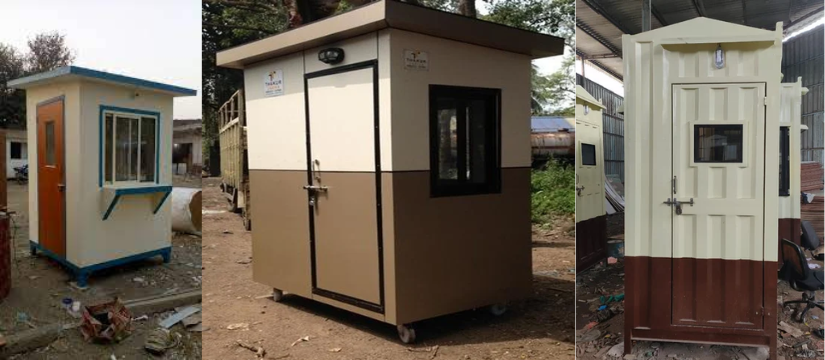In an increasingly security-conscious world, the need for robust security measures is paramount. Security cabins play a crucial role in safeguarding properties and controlling access to various facilities. These structures serve as the first line of defense, providing security personnel with a dedicated space to monitor, assess, and respond to potential threats. In this blog, we will delve into the world of unique and effective security cabins, exploring their different types and the benefits they offer.
1- Portable Security Cabins:
Portable security cabins are versatile structures that can be easily transported and installed in different locations. They are made from durable materials, such as steel or fiberglass, providing enhanced resistance against vandalism and unauthorized entry. These cabins are an ideal choice for temporary security needs, construction sites, or events where mobility is essential. Their compact design ensures quick deployment and flexibility, making them a practical solution for dynamic security requirements.
2- Bulletproof Security Cabins:
In high-risk environments, bulletproof security cabins offer an added layer of protection. Constructed with specialized materials, such as ballistic glass and reinforced steel, these cabins are designed to withstand various forms of ballistic threats. They provide security personnel with a secure space to monitor critical areas without compromising their safety. Bulletproof security cabins are commonly used in sensitive locations like government buildings, embassies, or valuable asset storage facilities.
3- Solar-Powered Security Cabins:
As sustainability becomes increasingly important, solar-powered security cabins offer an eco-friendly and cost-effective security solution. These cabins are equipped with solar panels that harness renewable energy, providing power for lighting, communication systems, and other necessary equipment. Solar-powered security cabins can operate off the grid, reducing dependency on traditional energy sources and minimizing their environmental impact. Additionally, they are equipped with energy-efficient features like LED lighting and smart power management systems.
4- Smart Security Cabins:
With advancements in technology, security cabins have become smarter and more efficient. Smart security cabins are equipped with various integrated systems, such as CCTV cameras, access control mechanisms, biometric scanners, and intrusion detection sensors. These cabins provide real-time monitoring and data analysis capabilities, allowing security personnel to respond swiftly to potential threats. Smart security cabins can also be integrated with central security systems, ensuring seamless communication and coordination with other security measures in place.
5- Elevated Security Cabins:
Elevated security cabins offer a strategic advantage by providing an elevated vantage point for security personnel. These cabins are typically raised on a platform or tower, granting a broader field of view and better visibility of surrounding areas. The elevated position enhances surveillance capabilities and enables security personnel to detect potential threats from a distance. Elevated security cabins are commonly utilized in large industrial sites, airports, or expansive properties where a comprehensive overview is essential.
Conclusion:
Security cabins serve as crucial elements in maintaining safety and protecting valuable assets. By exploring the different types of unique and effective security cabins, we have witnessed the evolution of these structures to cater to diverse security needs. From portable cabins for temporary deployments to bulletproof cabins for high-risk environments, and from solar-powered cabins for sustainability to smart cabins for enhanced monitoring capabilities, the security industry continues to innovate to ensure the highest level of protection. These cabins, equipped with cutting-edge technologies and specialized features, empower security personnel to respond effectively to potential threats and maintain a secure environment.


